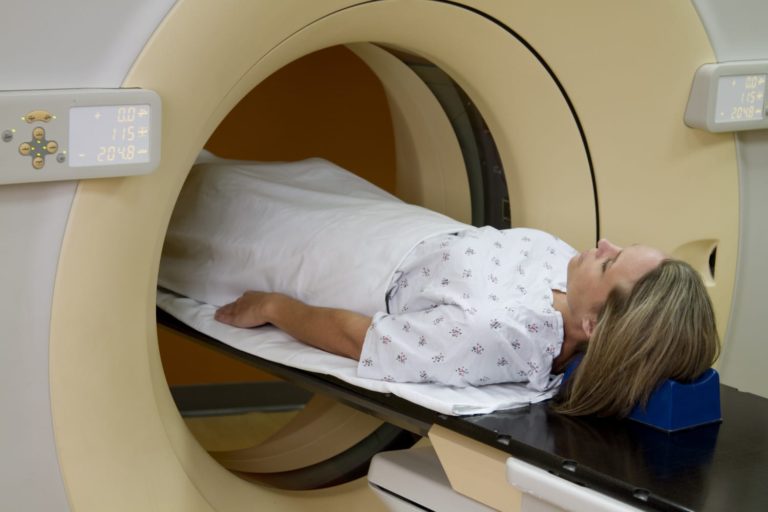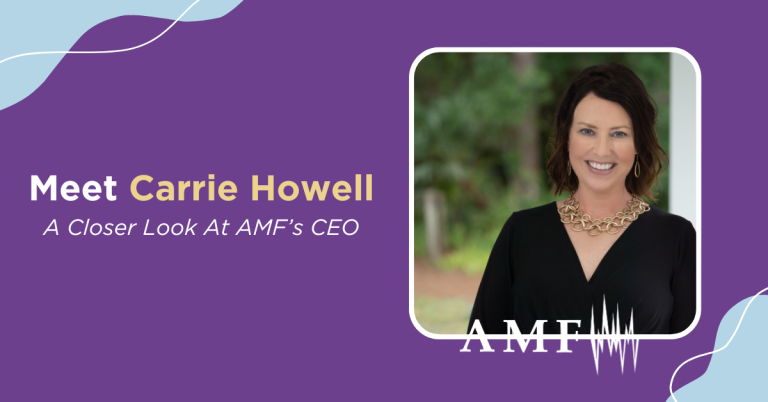Going back to school brings changes to your child’s routine, increased stress levels and extra risk of migraine attacks. Learn how to support children and adolescents with migraine as they prepare to return to school in the fall.
Parents of children and adolescents with migraine know: It’s difficult enough to get your child ready to go back to school without the fear of increased migraine attacks. However, it’s just a reality that the school year brings many changes that can trigger a migraine attack, from the transition back to a school schedule to the stress around what to do if a migraine attack occurs during class.
We hosted a webinar on how to manage the back-to-school season for children with migraine led by pediatric headache specialists Kaitlin Greene, MD, Oregon Health & Science University, and Serena Orr, MD, FRCPC, Alberta Children’s Hospital.
Read what Dr. Greene and Dr. Orr had to say below, including tips on preparing for the shift away from summer schedules, helping your child manage migraine symptoms in class and ensuring your child’s school staff is educated on migraine.
Back-to-School Triggers: Anxiety and Stress Can Trigger More Migraine Attacks
Back-to-school season is a challenging time for children and adolescents with migraine. They have to adapt to new class schedules, social situations and academic pressures, all of which can increase stress and anxiety and lead to an increased risk of migraine attacks. Managing the sudden change in sleeping schedules also puts additional strain on children with migraine, who may have trouble adjusting to much earlier wake-up times each morning.
“When you think about the transition from summer to school, many things are changing in a child’s day-to-day schedule, and we know that’s a challenge to the brain of somebody with migraine,” says Dr. Orr. “One study looked at school start times and migraine frequency and found that youth going to schools with earlier start times had higher migraine frequencies compared to youth going to schools with later start times. In teenagers with migraine, the impact of sleep can be significant.”
One of the most important things you can do when preparing your child to return to school is help them adjust to all these new changes to their routine. Because mental health and migraine are often linked, it’s important to create as much stability as possible while your child navigates transitional periods like going back to school after summer or winter breaks.
How to Help Your Child Manage Migraine Symptoms in School
No two people’s migraine treatment plans are alike. Finding what works for your child as they transition back into a school schedule will depend on their specific triggers and symptoms. Make sure to have a conversation about school with your child’s doctor during one of your summer follow-up appointments. This gives you the chance to work with the doctor to develop a plan for managing migraine attacks in the classroom and make any necessary adjustments to their overall treatment plan.
Below are some tips on how to ensure your child has as many options as possible to manage migraine during the school year.
Transition Back to School Slowly and Gradually
As we mentioned above, the sudden shift in schedules when a child goes back to school puts a lot of extra stress on their brains — stress that can increase the risk of migraine attacks. Dr. Orr recommends introducing changes to your child’s schedule gradually in the last few weeks of summer to help ease them into this transition.
“A lot of families will say, ‘School is starting tomorrow, so now you have to go to bed at nine,’ even though the child has been going to bed much later and waking up much later for a couple of months,” Dr. Orr says. “Instead, try to slowly transition their routines by pushing bedtime forward by 15 minutes a night.”
Gradually adjusting your child’s sleeping schedule can help them prepare for other changes in their schedule as well. For example, if they’re used to sleeping in and eating breakfast late (or not at all), they may not be hungry enough to eat before school when they have to start getting up much earlier. This can lead to a higher risk of migraine attacks later in the day, especially if they have to wait all the way until lunch to eat their first meal.
“I know it’s really hard. Many teenagers with migraine feel nauseous in the morning and they feel like it will make them worse to eat,” says Dr. Orr, “but even if they really don’t feel hungry, try to just get something small with protein into their system — like yogurt or an egg or some nuts — so they’re prepared to function in the morning.”
Inform School Staff About How to Support Your Child
Talking to your child’s school about migraine helps fight stigma around the disease while also educating teachers, administrators and nursing staff about how to support children and adolescents dealing with migraine attacks.
Before the school year starts, reach out to the school counselor or an administrator, like the principal. Explain your child’s migraine diagnosis, including how migraine may impact them in the classroom, and set expectations for how the school can offer support. It’s also helpful to provide any relevant medical details or information on possible accommodations during this first meeting.
“A letter from the doctor is often really helpful to clarify understanding of migraine and expectations for support,” says Dr. Greene. “When we write letters to support our students with migraine, we like to be really explicit about the fact that migraine is not just a headache or just a pain problem. It can also impact thinking, cognition, energy levels and sensory sensitivity, all of which have a big impact on school function.”
Remember that school staff may not be informed about migraine, so this is an opportunity to get everyone on the same page about how to best prepare your child for success during the school year.
Make an In-School Treatment Plan for Migraine Attacks During Class
The best way to minimize the impact of migraine symptoms on your child’s education is to plan as much as possible for the inevitable attacks that will occur.
“We know that despite all of our best efforts, migraine attacks are going to happen,” Dr. Greene says. “We do our best to prevent them, but we also want to be prepared for what happens if a migraine attack should occur during the school day.”
Some key things to consider in forming an in-school migraine treatment plan include:
Identify Early Signs of an Attack
Make sure your child can identify signs of a coming migraine attack, such as lights or vision disturbances, noise sensitivity, or irritability. If they don’t yet know the specific symptoms they experience early on in an attack, spend some time helping them learn to spot signs of the migraine prodrome phase. Keeping a migraine journal can be especially helpful here.
Come Up With Strategies for When an Attack Starts During Class
Discuss possible behavioral strategies that may help your child ward off an attack, and make sure their teachers know they may need to take a break during class if they start having migraine symptoms. This can be as simple as visiting the nurse’s office to take a short rest, being excused to go get a drink of water or eat a quick snack, or anything else that can help them reset before going on with the rest of their school day.
Sometimes it’s helpful for your child and their teachers to have an easy, non-disruptive way to signal that they need to take a break to manage their migraine symptoms. This makes it easier for your child to address an attack when and how they need, and it can reduce any anxiety they may have about interrupting class.
Arrange for the School to Have Their Medication Available
It’s likely that at some point your child will need to take medication or other acute migraine treatments during the school day. Make sure you know what their school requires for them to be able to take medication during the day, and submit any documentation and other instructions before the school year starts.
“We like to use what’s called a pediatric migraine action plan,” Dr. Greene says. “It’s a plan for what to do when your child has a migraine attack so everybody can be on the same page if a headache happens in school.”
Documented migraine action plans help school nurses identify if and when to administer prescription medications versus OTC pain medicines. They may also account for what medications your child is allowed to have on hand and administer themselves as opposed to medications that have to be stored in the nurse’s office.
“Some older children or teenagers might be allowed to carry medication in school, but even that often requires some documentation through the nurse’s office,” says Dr. Greene. “It is helpful to talk to your school ahead of time about what forms or documents are needed to allow medication use in school”.”
Arrange for Accommodations Both In and Out of the Classroom
There are a wide range of accommodations your child’s school and teachers can make in order to help give them the greatest chance of success, but you may have to advocate for these changes with school administrators. It’s best to do this before the school year starts, so your child can begin classes with the needed accommodations already in place. (Read more about your rights and options in advocating for accommodations for your child here.)
Some things to consider when working with your child’s school to make reasonable accommodations include:
Increased Time for Tests and Assignments
Arranging for additional time to take tests helps minimize stress that may increase your child’s chances of an attack.
“Because of the impacts on cognition before, during and after migraine attacks, accommodations for delayed tests or increased testing time are reasonable for migraine disease,” says Dr. Orr. “These are things we discuss with parents in our clinic and that you can advocate for.”
Additionally, it’s helpful to ask for assignments early since you never know when migraine symptoms might strike, even outside of normal school hours. If your child has extra time with assignments, they can work on them when they’re feeling well and take time to rest and recover when they need. This decreases the likelihood of missing or incomplete work due to bringing home assignments on nights when they have migraine symptoms.
Attendance
Ideally, your child attends school in person even during attacks, though they may need additional sick days when their migraine symptoms are too severe to be in class. However, accommodations can also help ensure they’re able to stay in their classes as much as possible. This may be as simple as making arrangements for your child to be able to carry a water bottle or snacks to avoid dehydration or hunger, or it can involve documenting a migraine action plan so they can access treatment when they need it instead of having to go home at the start of an attack.
“My patients that come to me with absenteeism are very concerned about how much school they’ve missed and how far behind they are. That may cause anxiety, more tension from anxiety, more muscle tension and sometimes more headaches — it can become a vicious cycle,” says Dr. Orr. “We can find ways of supporting the child to be able to stay in school with letters for their medication and accommodations that will allow them to be in school as much as possible.”
Class Schedules
For many high school students, it’s helpful to arrange for less mentally straining classes during the first and last class periods of the day. Adjusting to early morning hours is especially hard for people with migraine, and your child may still be fully waking up during their first class. By the end of the day, they’ve gone through an extended period of strain on their brains and may not have the energy left to fully focus on yet another class.
Scheduling study hall or other less mentally demanding classes during these periods allows your child to still attend class while also reducing the chances that they’ll miss important subjects or experience extra stress that could trigger an attack.
For more doctor-verified resources on all things migraine, visit our Resource Library.
The American Migraine Foundation is committed to improving the lives of those living with this debilitating disease. To learn more about all of your migraine treatment options, visit the AMF Resource Library. For help finding a healthcare provider, check out our Find a Doctor tool. Together, we are as relentless as migraine.









































































